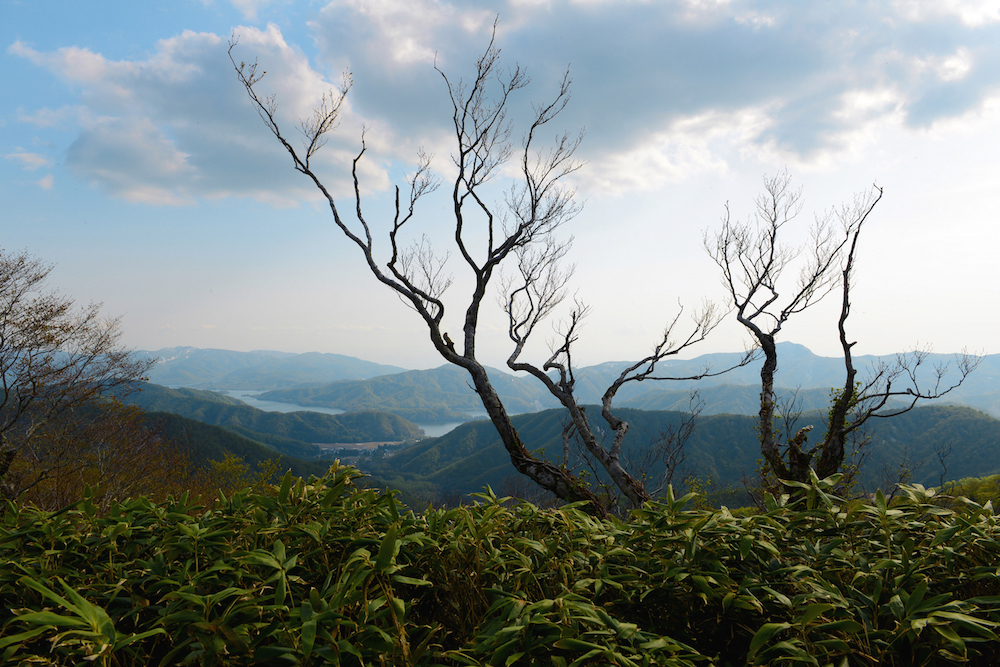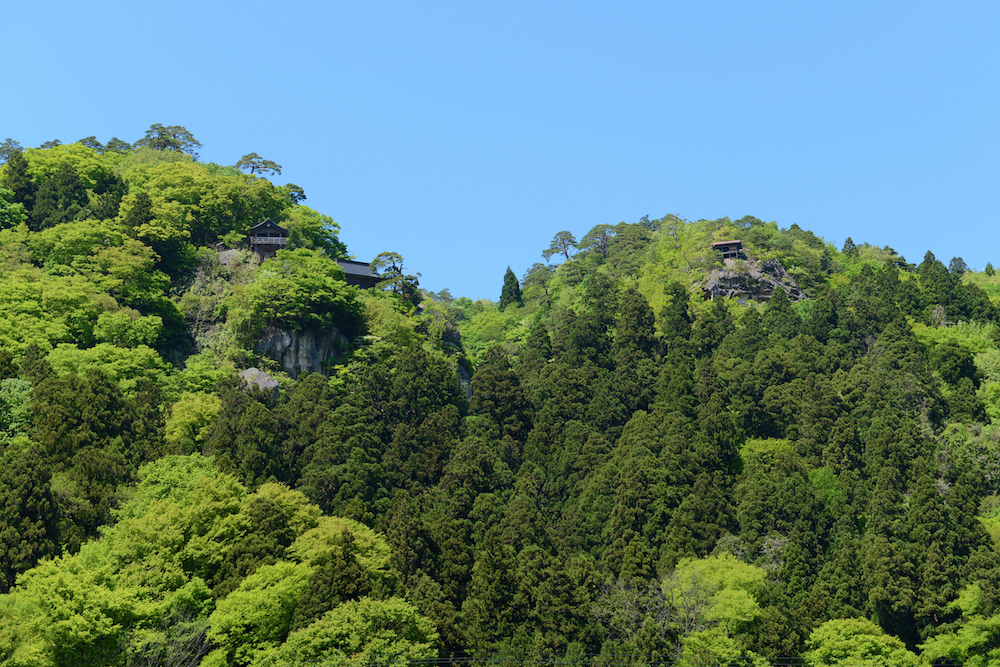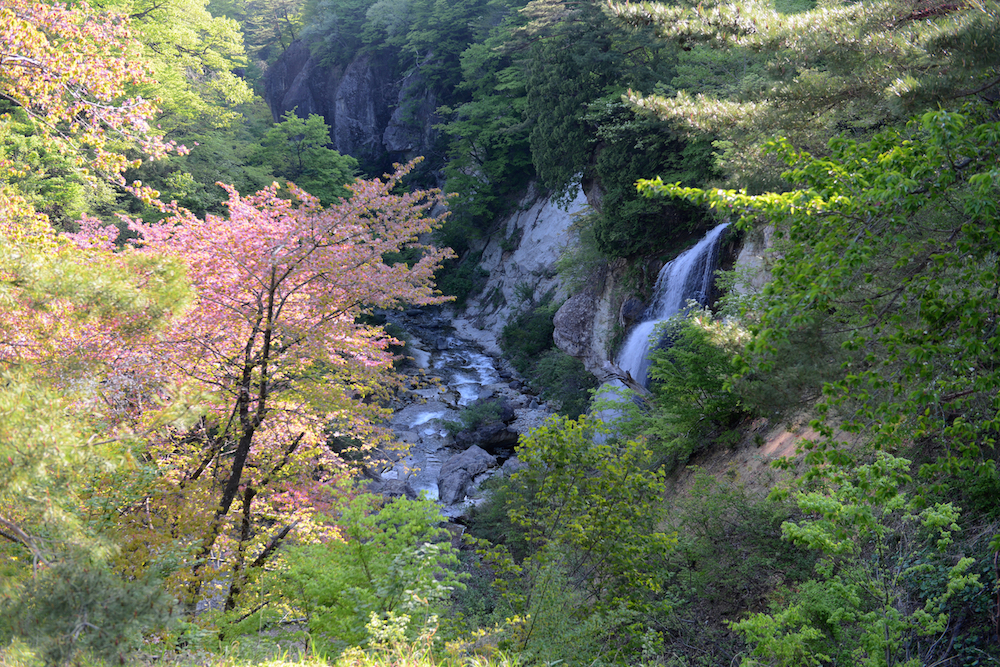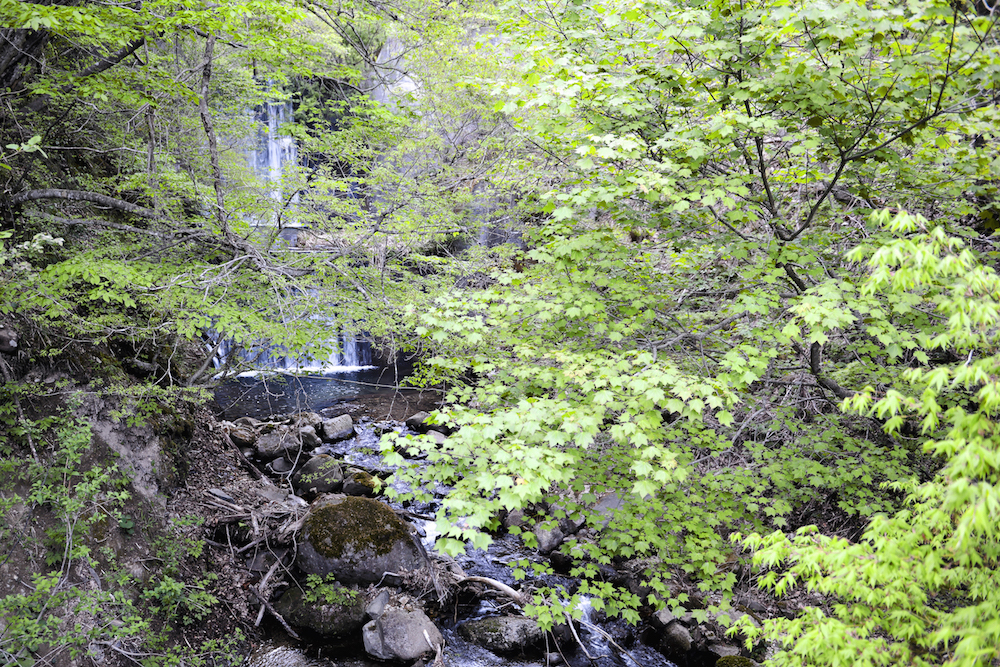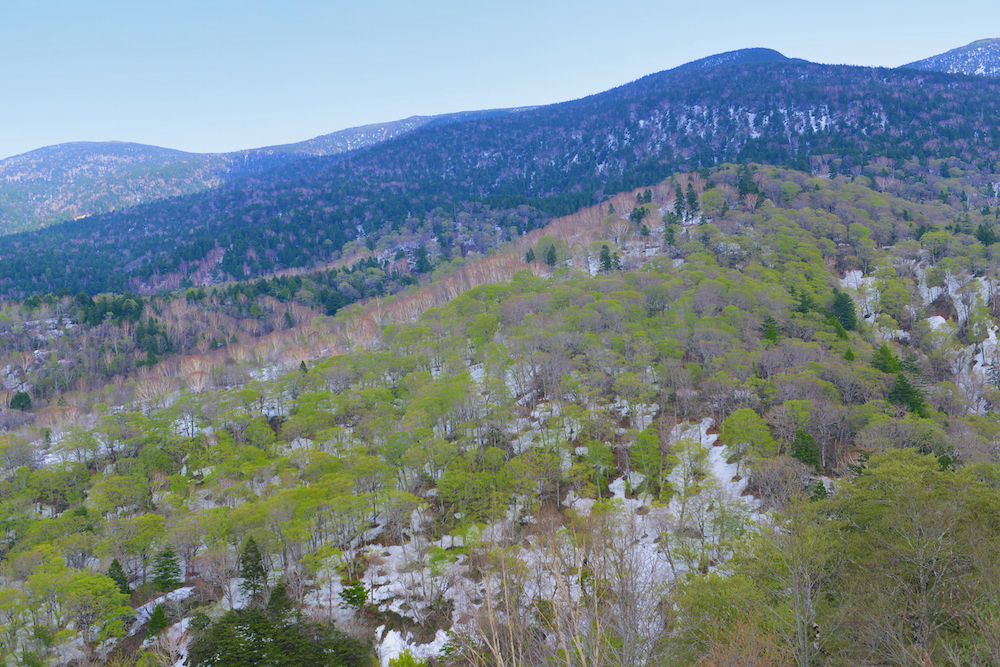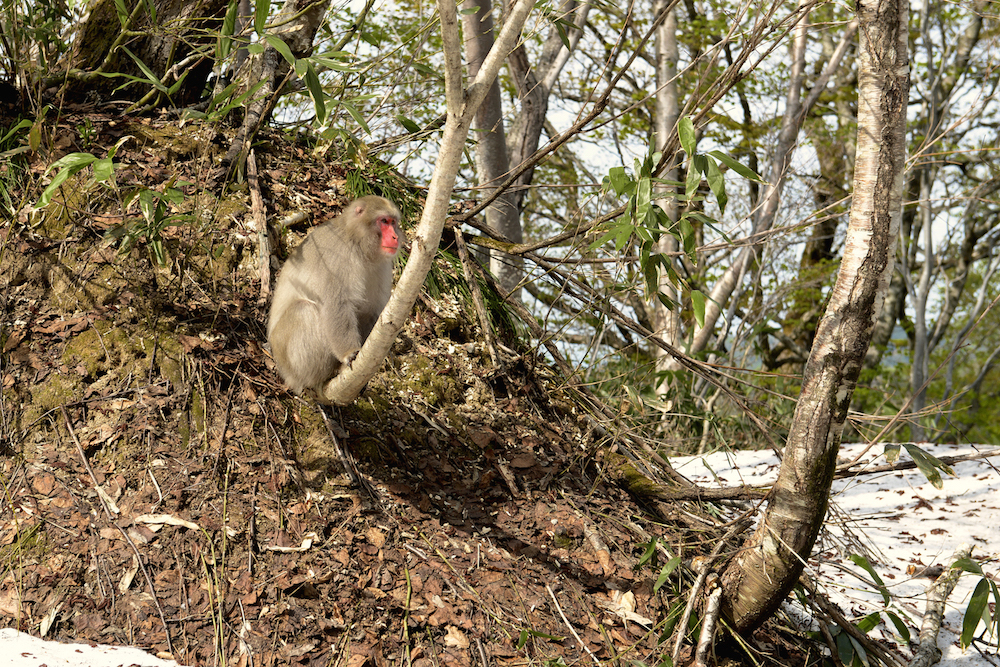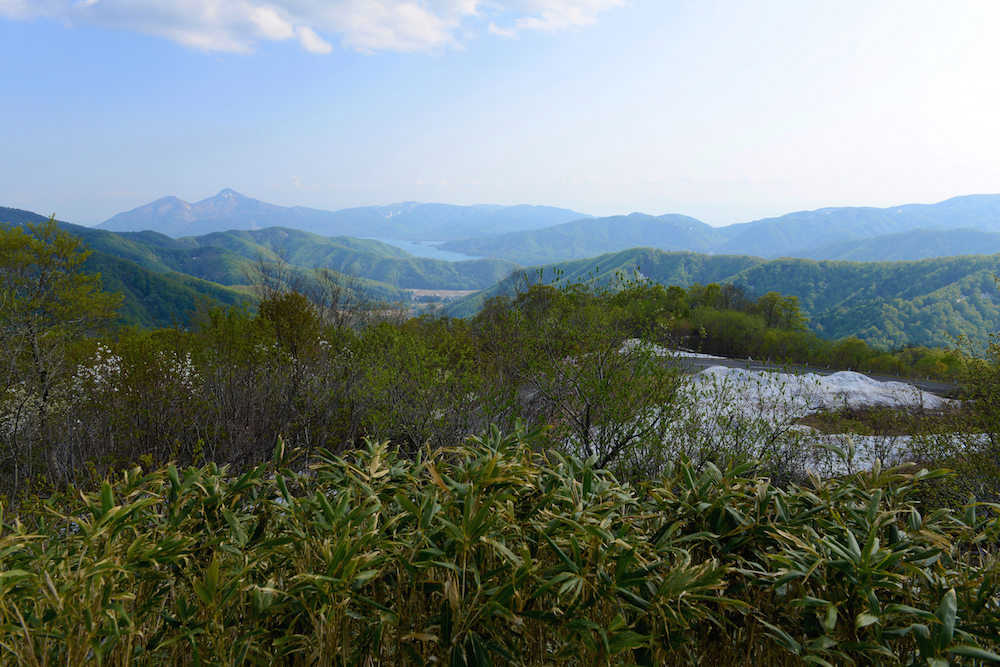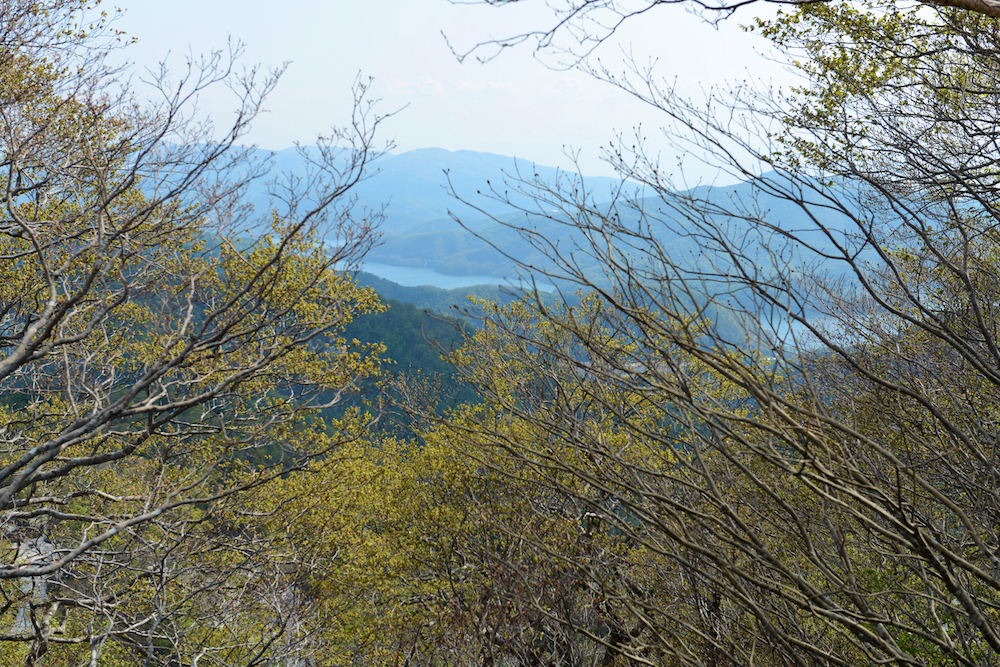Text and Photos by Stack Jones
It’s common knowledge that nearly everyone returns home to spend Golden Week with their family in Japan. This year was no exception; however, this past holiday marked the 7th year since my wife’s grandmother passed away. This is an important occasion, as the first, third, and seventh years require specific ceremonial acts that family members engage in. They include going to the bochi (cemetery), to pay respects by offering food, incense, and prayers. On that day my wife’s family arrived from all over Japan. As a result, I got to meet nearly all of her family, including an 86-year-old grandmother who lives in Iwaki, a place that was nearly wiped off the maps by the tsunami of 3.11.11. Iwaki is also located near the Daini Nuclear Facility, which was the first to report reactor failure during the crisis. Shortly thereafter that report would fade into obscurity, as the Daiichi Nuclear Plant took center stage, etching an indelible mark in everyone’s collective conscience.
Yonezawa: Uesugi Jinja Shrine
The family affair described above occurred on May 4, which was sixteen months to the day that my son was born. The next day was Kodomo no Hi (Children’s Day), and We took our son to Uesugi Jinja Shrine, where a festival was underway. Uesugi Jinja Shrine is best known for the famous festival held every February known as Uesugi Yuki Toro Matsuri (Yonezawa Snow Festival). During this event, hundreds of lamps made of snow light up the shrine. I’ve had the best amazake (warm sweet rice sake) at this festival, and I don’t even like sake. Makes me wonder what all the fuss is over eggnog?
When we first entered Uesugi Shrine, numerous handmade paper lanterns made by children hung on display at one of the numerous smaller shrines. No festival oriented toward children would be complete without at least one kyarakuta sukui booth. Kyarakuta sukui is a popular attraction where young children use small nets to try to scoop up gleaming treasures that spin about in an artificial current. My son crashed one such booth, but the operator didn’t seem to mind. After prying him away, and feeding the koi, I purchased a jar of my favorite Yamagata cherry jam at the shrine’s shop. By then it was time to return home for an excellent dinner prepared by my wife’s mother.
Yamagata: The Temple Of A Thousand Steps
On the next day we drove to Yamagata, which is where the national treasure Yamadera Temple is located. The temple sits on a mountain peak that separates Yamagata from Sendai. The view from the top is spectacular, and the scent of cedar and pine that fills the air is invigorating. Before climbing Yamadera, we boarded a train to Omoshiro Yama Kogen, which is one stop further into the mountains. We accidentally took a rapid train that was bound for Sendai, which passed our destination. We ended up in a tiny town called Sakunami, where the Miyagikyo Distillery for the Nikka Whisky Company is located; with an hour to kill before the next train arrived, we took the factory tour. I learned that Masataka Taketsuru, as a young man, had gone to Scotland to study, where he met, and married Jessie Roberta “Rita” Cowan. The couple returned to Japan, and Taketsuru eventually launched Nikka Whisky. As we prepared to return to Omoshiro Yama Kogen, I considered how fleeting life is. That odd couple, the Taketsurus, started a business that would eventually thrive. Today, their products continue to garner prestigious international awards, yet they’re no longer around to witness the fruits of their labor.
Omoshiro Yama Kogen: A Hidden Gem
I first discovered Omoshiro Yama Kogen purely by accident. I was on my way to Sendai when I happened to look out the window at the right moment. I spotted a waterfall in the valley far below. It was only for a split second that I got a glimpse of the water as it cascaded down the side of the mountain. The following weekend I went back to investigate. Omoshiro Yama Kogen has become one of my favorite destinations in Japan, and I’ve visited during winter, spring, summer, and fall. It’s incredibly unspoiled, as few people even know it’s there. The trail that follows along the pristine river flows toward Yamadera. It’s a great adventure that everyone who visits Japan should experience. Omoshiro Yama Kogen is also a nirvana for local skiers. Only a hop, skip, and a jump from Yamagata Station, one can literally step off of the train in their snow boots, exit the tiny station, and step right onto a lift that goes to the top of the mountain.
We stayed at Omoshiro Yama Kogen a bit too long. By the time we arrived at the entrance to the steps of Yamadera Temple, the sun was already beginning to set behind the mountains. The entrance was closed. There’s nothing but a small sign, written in Japanese that stated this. I wasn’t about to travel all the way to Yamadera without going to the top where the temple was located. I told my wife, “I wanted to look around the first turn.” Off I went. As I did my wife said, “What if you told our son not to do something, and he did it anyway?”
While on the ascent to the top I had plenty of time to reflect on the question my wife posed. I concluded that if my son ignored something I told him to do, and he had a legitimate reason to do so, then he was discovering the power of autonomy, and therefore, it would not be improper for him to use his cognitive skills to make such a determination. While the Japanese will obey even the most benign forms of requests, or orders, we in the West are taught that rules are made to be broken. In reality, I was trying to justify ignoring a sign that I couldn’t read, and as far as I was concerned, shutting off access to such a beautiful location when the optimal light of the day was occurring was irrational. This is one thing that perturbs me about Japan—the frequent lack of logic in the way things are done—the closing of parks, parking lots, and beaches at 4:00 p.m., and shopping centers at 8:00 p.m. is perhaps some of the reasons the nation has problems with tourism. Actually, in defense of the indefensible, I’ve walked past the sign at that entrance to the temple least three other times in the past, never once realizing that it was communicating that the temple was closed.
Tall pines, and cedar cover the path to the top of Yamadera. A children’s shrine is located there. Little red and white figurines called jizou were placed at this spot by parents who grieved the loss a child due to some unfortunate event. To see those miniature statuettes huddled together in the hundreds, surrounded by pinwheels, and what had once been a child’s favorite toy is quite an emotional experience. The figurines are believed to protect children from any danger they might face on their journey to wherever it is that they go in the hereafter.
It was already dark as I made my way back to town. I took one final shot of Yamadera as the lights inside homes that sit atop ground-floor shops flickered on. When I got to the car, my son was asleep in my wife’s arms.
The Tengendai Highlands Of Yonezawa
The mountains that surround Yonezawa are called Tengendai Highlands. They exist as a border between Yonezawa and Fukushima. That remarkable area is a mere fifteen-minute drive from the home that my wife grew up in. I was surprised to learn she had never explored them.
I’ve done a lot of writing about Fukushima, and the industry that stigmatized that region. I’ve reported on antinuclear rallies, the earthquake, the tsunami, and from inside the exclusion zone where entire communities remain abandoned. I’ve seen pets revert to a wild state, and stumbled upon a horse that the owners abandoned in its corral, and which was slowly starving to death. I tried to release it, but I wasn’t able to break the locks, or tear down the metal posts that imprisoned the animal. I also photographed and interviewed a cattle rancher that lost his entire stock. Soon thereafter, he committed suicide. Scores of schools sat abandoned, and teachers who remained were threatened with termination if they discussed the dangers with students.
A Forgotten Fukushima
I first discovered the beauty of the Fukushima coastline when I entered the exclusion zone in the evacuated town of Minami Soma. The ocean was as clear as any I’ve seen in Miami, the Bahamas, Mexico, Hawaii, or Greece. Even still, the cities’ inhabitants are treated like the lepers of a thousand years ago, or those infected with HIV in the early 80s. Today, Tepco’s website continues to blame the tsunami for all the damage the corporation is responsible for.
Looking toward the terrain from the Tengendai Highlands, I had no idea that I was about to discover that the Fukushima national parks surpassed the beauty of Japan’s other national treasures such as Nikko National Park, which I wrote about for Tokyo Weekender in a previous article. The temperature was twelve degrees Celsius, and the mountains were still covered in a blanket of snow but the sunshine, clear skies, and dry air made it feel quite a bit warmer.
From atop Aizu, I got a glimpse of Lake Inawashiro, which sat far below in the valley on the Fukushima side of the great divide. At the time I had no idea I’d be discovering some of the most breathtaking scenery that Japan has to offer, including numerous waterfalls, such as Fudo-Taki. There were plenty of snow monkeys, and other wildlife as well. I saw cyclists speed by on the lengthy downhill ride to the foothills of Yonezawa.
Inawashiro-Ko is located in Bandai-Asahi National Park in Fukushima. The fourth largest lake in Japan, it’s also called Tenkyo-Ko (Heaven’s Mirror). Doctor Hideyo Noguchi was born in Inawashiro. He became famous for his research in yellow fever, which earned him a portrait depiction on Japan’s 1,000-yen note. His family home has been preserved as the Noguchi Hideyo Memorial. There is also the Aizu Folklore Museum, the Sekai-No-Garasu-Kan (World Glass Hall), and the Inawashiro Jibiru-Kan (locally brewed beer hall), where one can drink beer brewed from the underground spring waters of Mt. Bandai-san. At the foot of Mt. Bandai-san, along the Inawashiro lakeside is a group of hot springs, including Tenkyo-Dai, Omote-Bandai, Ottate, and Bandai Inawashiro-Hayama. During winter downhill skiing takes place from Mt. Bandai to Lake Inawashiro. During winter, strong winds, and waves form ice sculptures on the shores of Tenjin Beach. Shibuki-Gori (frozen mist) eerily hovers along the shores of Inawashiro to make for fantastic photography.
Unfortunately, I didn’t have time to venture to Lake Inawashiro-Ko. The gate at the entrance of the park closed at 5:00 p.m. I thought this was as senseless as closing Yamadera at the most appealing time of day. Even amateur photographers know that the magical hour is early morning, and late afternoons.
I left the car for some final shots of the beauty that exists in Fukushima. I must have looked like the boy in the children’s story, “The Five Chinese Brothers,” who kept scooping up hidden treasures that he discovered, while refusing to return to the shore. Even worse was the fact that another unexplored bend laid ahead, and I had to begrudgingly leave it be. If I were alone, I would have continued on, and finished the day at the brewery. I would have slept on the shores of Tenjin Beach, and bathed in the crystal waters when morning revealed itself. “If…” One of the worst four letter words ever devised.
Fukushima… Is this where cancer in children have soared 6000%? Is it a national treasure? Is it a paradise where monkeys roam freely, and where pristine waters supply nearby towns? Is this paradise? Or is it a paradise lost?
Main Image: A view from Aizu of Inawashiro-Ko located in Bandai-Asahi National Park.
Updated On December 26, 2022

